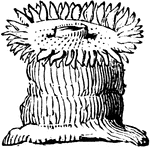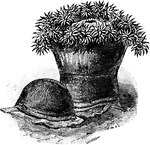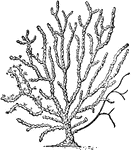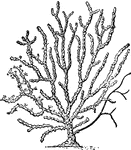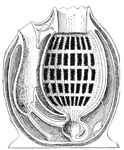The Corals and Sea Anemone ClipArt gallery provides 241 images of corals and sea anemone in the phylum cnidaria. They attach themselves to the bottom using an adhesive 'foot', called a basal disc.
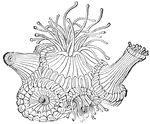
Coral Polyp
An individual coral is known as a polyp. They resemble sea anemone, as they have tubular bodies with…
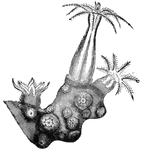
Coral Polyp
An individual coral is known as a polyp. They resemble sea anemone, as they have tubular bodies with…
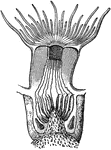
Vertical Section Through a Polyp
Vertical section through a polyp. Mouth surrounded by tentacles and beneath it the "stomatodaeum."
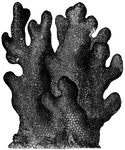
Porites Furcata (Lamarck)
"The polyp of the Porites is an animal somewhat pitcher-shaped, with twelve short tentacula,…
Pyrosoma
"The colonies of these singular creatues are in the form of a cartilaginous tube, open at one end. In…

Astraea rotulosa
"It is to this family more especially that the formation of the coral reeds is to be attributed. In…

Salpa Africana
"Diagram of Salpa africana. o.a., Oral aperture; d.t., dorsal tubercle; te., tentacle; g., ganglion;…

Sarsia
"Medusiform person (Sarsia), one of the Anthomedusae, detached from a hydroid colony of the family Corynidae.…

Sea Anemone
Edwardsia beautempsi is a species of sea anemone that lives freely in tubes in the sand, unattached.
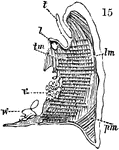
Perpendicular Section of a Sea Anemone
An perpendicular section of a sea anemone. Sea anemones are a group of water dwelling, predatory animals…

Sea Colander
Agarum Turneri, Sea Colander, so called from the perforations with which the frond, as it grows, becomes…

Magnified Portion of Fan Gorgon
"The Fan Gorgon, from the Antilles; it often attains a height of eighteen or twenty inches. The…
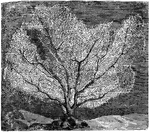
Gorgonia Flabellum
"The Fan Gorgon, from the Antilles; it often attains a height of eighteen or twenty inches. The…
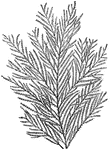
Gorgonia Verticellata
"The Fan Gorgon, from the Antilles; it often attains a height of eighteen or twenty inches. The…

Magnified Portion of Gorgonia Verticellata
"The Fan Gorgon, from the Antilles; it often attains a height of eighteen or twenty inches. The…

Sea Pansy
The Sea Pansy (Renilla reniformis) is a sea pen in the Renillidae family. Shown here with a single polypite,…

Pennatula Spinosa
"These winged species of polypidom are somewhat scythe-shaped, well developed, and furnished with a…

Sea Squirt Gastrulation
"Gastrulation of an Ascidian. I. Vesicular Morula of an Ascidian flattened and about to undergo gastrulation.…
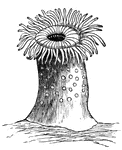
Sea-anemone
The sea-anemones are mostly found between tide-marks in rock-pools, or on ledges of stone, adhereing…
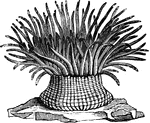
Sea-anemone
"Their tentacles, which are disposed in regular circles, and tinged with a variety of bright lively…

Sea-Anemone
This is a diagram of the sea-anemone, illustrating another type of radial symmetry. A, cross section;…
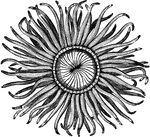
Mouth of the sea-anemone
"Their tentacles, which are disposed in regular circles, and tinged with a variety of bright lively…
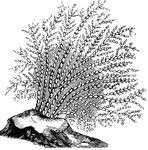
Sea-fan
"In the family of the Gorgonidae the substance of the polypidom is collected into a solid central axis,…

Sea-Fir
The Sea-Fir (Sertularia tubitheca) is mistaken as a plant but is actual a hydrozoan animal of the phylum…

Sea-pen
"The main stem of the polypidom of these animals is fleshy, but is furnished with an internal bony axis,…

Types of Seashore Life
24. Various corals, 25. Razor-shell, 26. Cockle, 27. Various winkels, 28. Shore crab, 29. Father lasher,…

Siphonophora
"Diagram showing possible modifications of medusiform and hydriform persons of a colony of Siphonophora.…
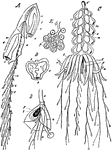
Siphonophora
"Floating colonies of Siphonophora. A, Diphyes campanulata. B, A group of appendages from the stem of…
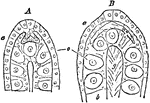
Sporosac
"Two female sporosacs (degenerate medusae) of Hydraetinia echinata. a, ectoderm; b, endoderm; o, eggcella;…
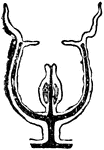
Sporosae
"Gradual degeneration of the medusa bud into the form of a sporosae. The black represents the enteric…

Sporosae
"Gradual degeneration of the medusa bud into the form of a sporosae. The black represents the enteric…
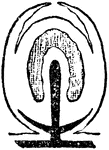
Sporosae
"Gradual degeneration of the medusa bud into the form of a sporosae. The black represents the enteric…
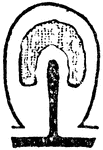
Sporosae
"Gradual degeneration of the medusa bud into the form of a sporosae. The black represents the enteric…
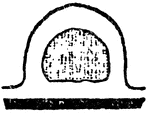
Sporosae
"Gradual degeneration of the medusa bud into the form of a sporosae. The black represents the enteric…
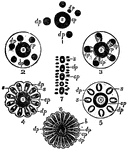
Stylasteridae
"Diagrams illustrating the successive stages in the development of the cyclosystems of the Stylasteridae.…
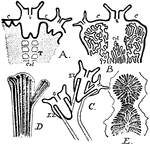
Stylophora Digitata
"A, Schematic longitudinal section through a zooid and bud of Stylophora digitata. In A, B, and C the…
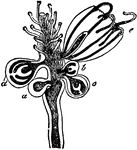
Syncoryne
"Hydriform person of Syncoryne, with medusiform persons budding from it, and shown in various stages…

Tentacles
"1, Portion of epithelium from the tentacle of an Actinian, showing three supporting cells and one sense…

Trachomedusae
"Simple tentaculocyst of one of the Trachomedusae (Rhopalonema velatum). The process carrying the otolith…
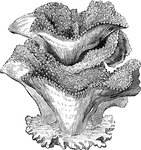
Tree-coral
"These animals are generally called Tree-corals, on account of the forms of the polypidons…

Tubipora Musica
"The Tubipora is a calcareous coral, formed by the combination of distinct, regularly arranged…
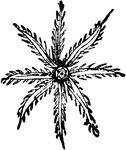
Crown of Delicately Fringed Tentacula of Tubipora Musica
"The Tubipora is a calcareous coral, formed by the combination of distinct, regularly arranged…
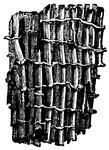
Magnified Portion of Tubipora Musica
"The Tubipora is a calcareous coral, formed by the combination of distinct, regularly arranged…

Polyp of Tubipora Musica
"The Tubipora is a calcareous coral, formed by the combination of distinct, regularly arranged…

Tube and Polyp of Tubipora Musica
"The Tubipora is a calcareous coral, formed by the combination of distinct, regularly arranged…
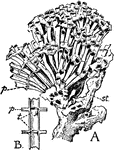
Tubipora Purpurea
"A. Skeleton of a young colony of Eubipora purpurea. st, Stolon; p, platform. B. Diagrammatic longitudinal…
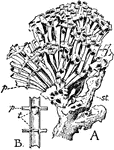
Colony of Tubipora Purpurea
"A Skeleton of a young colony of Tubipora purpurea. st, stolon; p, platform. B, Diagrammatic…
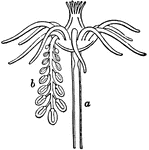
Tubularia Indivisa
"A single hydriform person a bearing a stalk carrying numerous degenerate medusiform persons or sporosacs…
Umbellularia Groenlandica (Lamarck)
"The Umbellularia Groenlandica has a very long stem, which is terminated at the summit only…

Veretillum Cynomorium (Lamarck)
"The species shown in this figure has a simple, cylindrical body, without branchiae, and a rudimentary…

Zoanthid Colony
"A, Zoanthid colony, showing the expanded zooids. B, Diagram showing the arrangement of mesenteries…
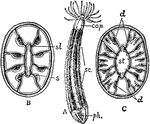
Zooid
"Single zooid with the adjacent soft tissues as seen after removal of the exoskeleton by decalcification.…
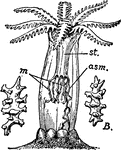
Alcyonarian zooid
"An expanded Alcyonarian Zooid, showing the mouth surrounded by eight pinnate tentacles. st, Stomodaeum…
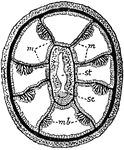
Alcyonarian Zooid
"Transverse section of an Alcyonarian zooid. mm, mesenteries; mb, muscle banners; sc, sulcus; st, stomodaeum."…
